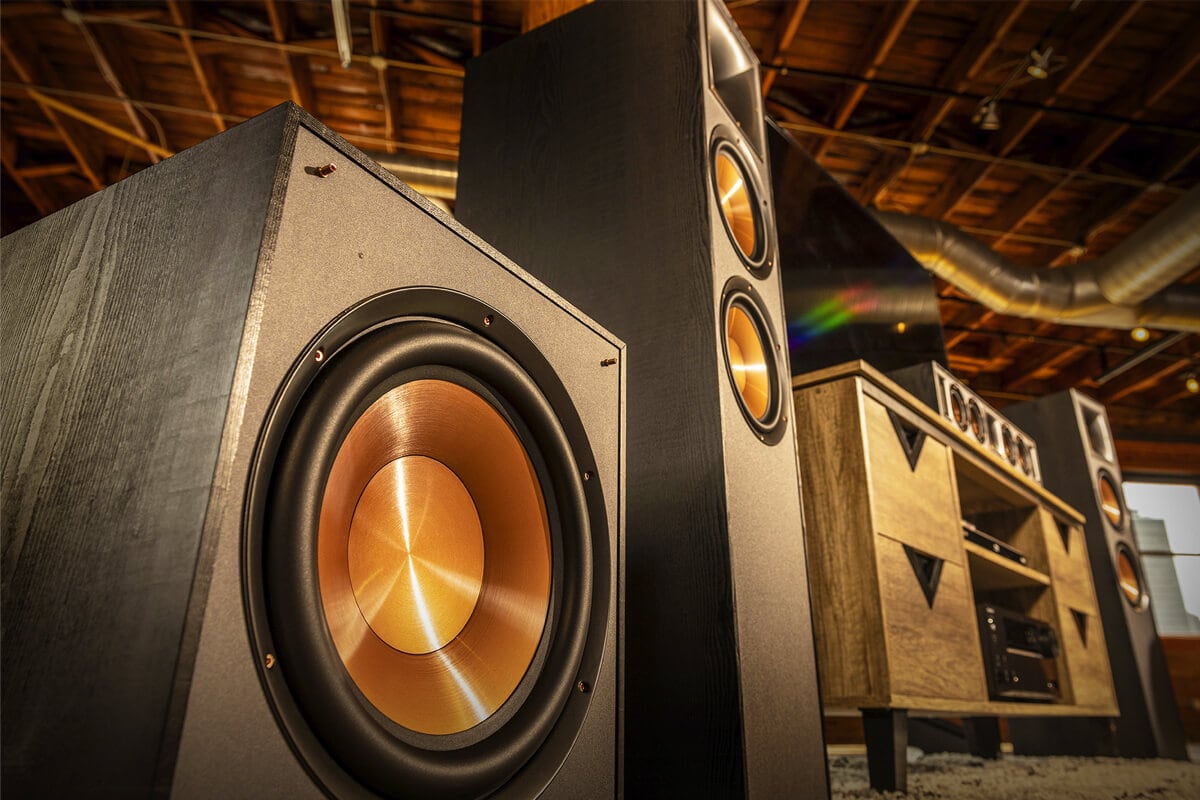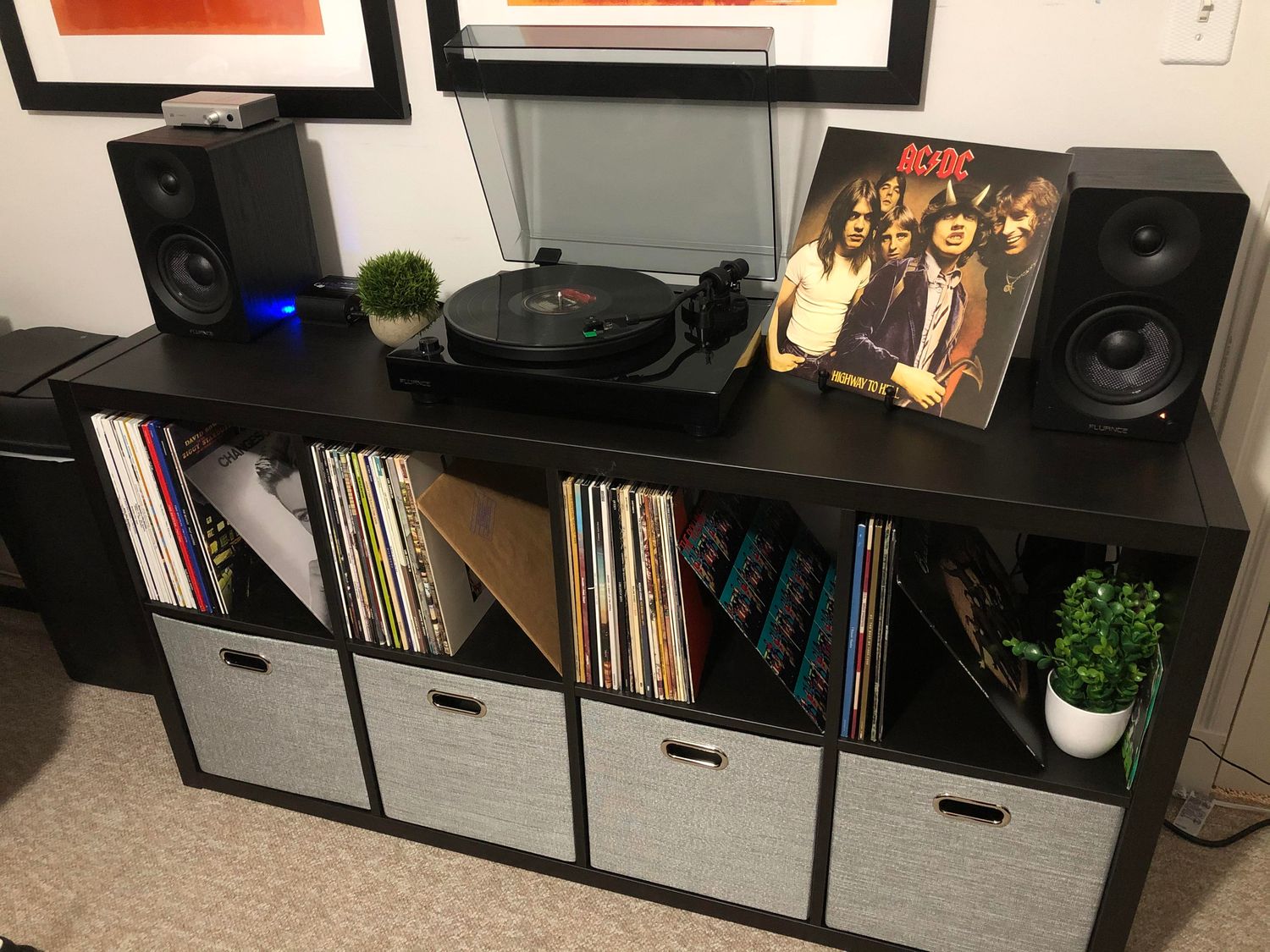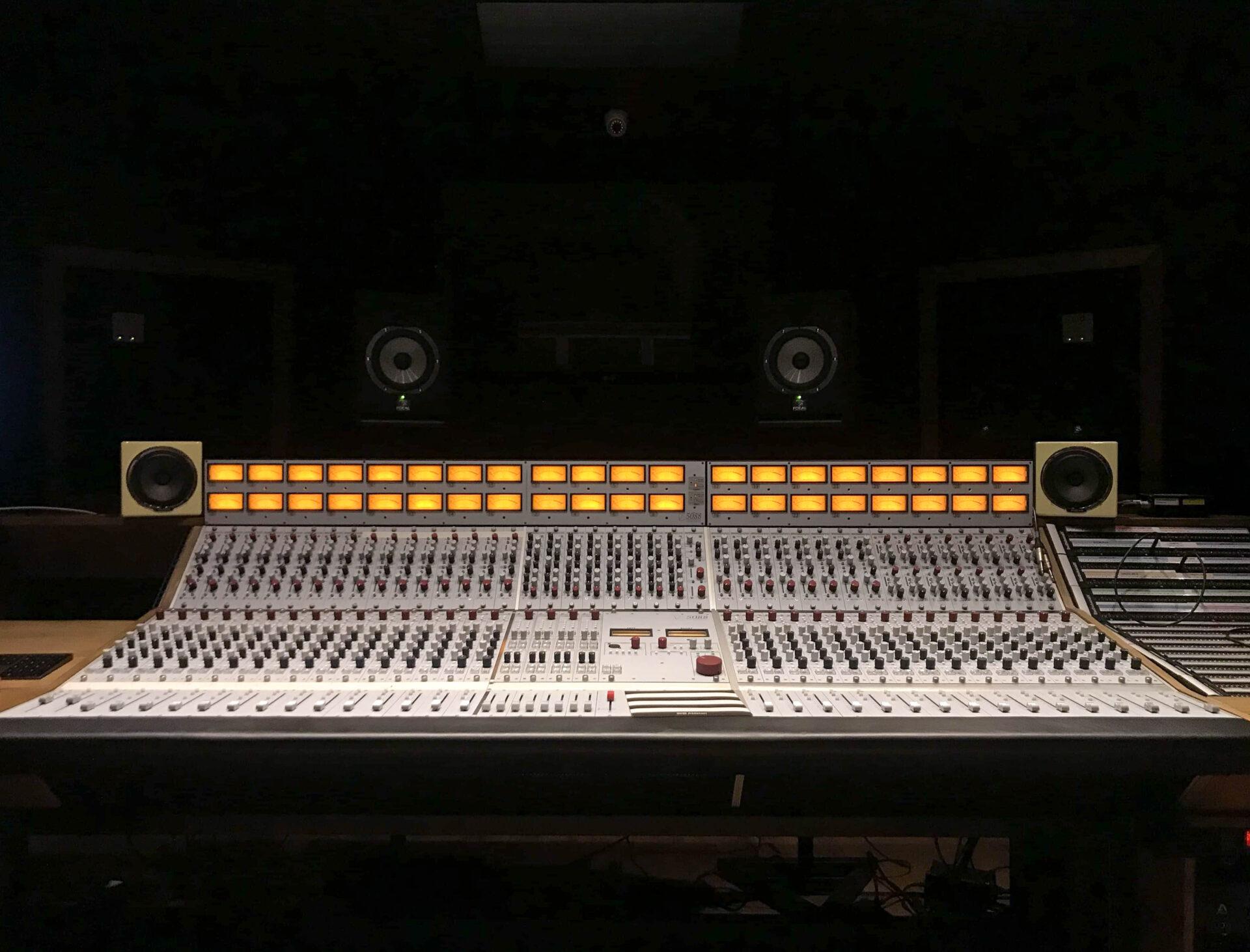Home>Production & Technology>Acoustic>How Many Acoustic Panels Do I Need


Acoustic
How Many Acoustic Panels Do I Need
Published: March 13, 2024
Find out how many acoustic panels you need to improve sound quality in your space. Learn the best practices for acoustic treatment and get expert advice on acoustic panel quantity.
(Many of the links in this article redirect to a specific reviewed product. Your purchase of these products through affiliate links helps to generate commission for AudioLover.com, at no extra cost. Learn more)
Table of Contents
Introduction
Acoustic panels are an essential component of sound management in various spaces, ranging from recording studios and home theaters to office conference rooms and auditoriums. These panels play a pivotal role in controlling sound reflections, minimizing echoes, and enhancing overall acoustics. Understanding the optimal number of acoustic panels required for a specific area is crucial for achieving the desired sound quality and ambiance.
In this comprehensive guide, we will delve into the factors that influence the determination of the ideal quantity of acoustic panels. By exploring aspects such as room size and shape, desired acoustic treatment, and budget constraints, we aim to provide valuable insights to help individuals and professionals make informed decisions when investing in acoustic panels.
The journey to uncovering the optimal number of acoustic panels involves a blend of science and art. It requires a nuanced understanding of sound dynamics and an appreciation for the aesthetic and functional aspects of acoustic design. Whether you are embarking on a home renovation project, setting up a professional recording studio, or seeking to optimize the acoustics of a commercial space, this exploration will equip you with the knowledge needed to navigate the realm of acoustic panels with confidence and clarity.
Join us as we embark on this enlightening expedition into the world of acoustic panels, where we will unravel the intricacies of sound control and unveil the secrets to creating acoustically captivating environments. Let's embark on this sonic adventure together, as we uncover the magic behind the perfect harmony of form and function in acoustic panel placement.
Understanding the Purpose of Acoustic Panels
Acoustic panels serve as indispensable tools in managing sound within a space. Their primary purpose is to address acoustic issues by controlling reverberations, minimizing echoes, and optimizing the overall sound quality. These panels are designed to absorb, diffuse, or redirect sound waves, thereby shaping the acoustic environment to meet specific requirements.
In recording studios, acoustic panels play a pivotal role in creating a controlled sonic environment. By strategically placing these panels, engineers and musicians can minimize unwanted reflections and achieve a balanced, natural sound. Similarly, in home theaters, acoustic panels contribute to a more immersive audio experience by reducing sound distortions and enhancing the clarity of dialogue and music.
In office settings, acoustic panels are employed to mitigate noise distractions and create a conducive environment for focused work and productive discussions. By absorbing excess sound energy, these panels help in reducing the overall noise level, fostering a more comfortable and efficient workspace.
Furthermore, in educational institutions and auditoriums, acoustic panels are utilized to optimize speech intelligibility and ensure that every word spoken is clearly conveyed to the audience. This is achieved by controlling the reverberation time within the space, allowing for enhanced clarity and comprehension during lectures, presentations, and performances.
Beyond their functional role, acoustic panels also contribute to the aesthetic appeal of a space. With a wide array of designs, colors, and customizable options, these panels can seamlessly integrate into the overall interior design, adding a touch of sophistication while serving a crucial acoustic purpose.
Understanding the multifaceted purpose of acoustic panels is essential for making informed decisions regarding their placement and quantity within a given space. By recognizing their ability to transform the sonic landscape and enhance the overall ambiance, individuals and professionals can harness the full potential of acoustic panels to create captivating, acoustically optimized environments.
Factors to Consider When Determining the Number of Acoustic Panels Needed
When embarking on the journey of determining the optimal number of acoustic panels required for a specific space, several crucial factors come into play. These factors serve as guiding principles, shaping the decision-making process and ensuring that the resulting acoustic treatment aligns with the unique characteristics and requirements of the environment. By carefully considering these key elements, individuals and professionals can effectively gauge the quantity of acoustic panels needed to achieve the desired sound control and acoustic enhancement.
Room Size and Shape
The dimensions and layout of the room significantly influence the quantity of acoustic panels required. Larger spaces with expansive surfaces tend to exhibit greater sound reflections and reverberations, necessitating a higher number of panels for comprehensive sound management. Similarly, irregularly shaped rooms may present acoustic challenges that demand strategic placement of panels to address specific reflection points and optimize sound dispersion. By assessing the size and shape of the space, one can ascertain the spatial coverage needed for effective sound control, thereby determining the quantity of acoustic panels essential for achieving the desired acoustic environment.
Desired Acoustic Treatment
The specific acoustic goals and requirements of the space play a pivotal role in determining the number of acoustic panels needed. Whether the aim is to create a deadened, absorptive environment for recording studios or a balanced, diffused ambiance for home theaters, the desired acoustic treatment directly influences the quantity and type of panels to be employed. Different acoustic treatments, such as absorption, diffusion, and bass trapping, necessitate varying quantities and configurations of panels to achieve the desired sonic outcome. By clearly defining the acoustic objectives, individuals can tailor the selection and placement of acoustic panels to align with the intended sound enhancement, thereby optimizing the quantity of panels required for the designated acoustic treatment.
Budget and Space Constraints
Practical considerations, such as budget limitations and space constraints, also impact the determination of the number of acoustic panels needed. While an ideal acoustic environment may warrant a higher quantity of panels for comprehensive sound control, budgetary constraints may necessitate a more strategic approach to panel placement and quantity. Similarly, space limitations may require a balanced assessment of the available surfaces for panel installation, influencing the quantity and configuration of panels to achieve an optimal acoustic outcome within the given space. By factoring in budget and space constraints, individuals can make informed decisions regarding the quantity of acoustic panels that align with practical considerations while still delivering significant acoustic benefits.
By carefully evaluating these factors, individuals and professionals can navigate the process of determining the number of acoustic panels needed with clarity and precision. This comprehensive approach ensures that the resulting acoustic treatment is tailored to the specific characteristics and requirements of the space, ultimately culminating in a harmonious fusion of form and function in the realm of sound management and acoustic enhancement.
Room Size and Shape
The dimensions and layout of a room play a pivotal role in dictating the quantity of acoustic panels required to achieve optimal sound control and enhancement. When assessing the impact of room size and shape on acoustic panel placement, it becomes evident that these factors significantly influence the spatial coverage and strategic positioning of panels within the environment.
In larger spaces, such as auditoriums, concert halls, or open-plan offices, the expansive surfaces contribute to increased sound reflections and extended reverberation times. As a result, a higher quantity of acoustic panels is typically necessary to effectively manage sound reflections and minimize reverberations. The spatial coverage required to address the acoustical challenges presented by larger rooms often necessitates a comprehensive approach to panel placement, ensuring that key reflection points are strategically targeted to achieve balanced sound dispersion and control.
Moreover, irregularly shaped rooms introduce unique acoustic complexities that demand a tailored approach to acoustic panel placement. The non-uniform surfaces and varied angles within such spaces can create distinct reflection points and acoustic hotspots, requiring meticulous consideration when determining the quantity and positioning of acoustic panels. By strategically addressing these specific reflection points, it becomes possible to optimize sound dispersion and minimize the impact of irregular room shapes on the overall acoustics.
Furthermore, the ceiling height of a room contributes to its acoustical characteristics, influencing the propagation and distribution of sound waves. Taller ceilings often result in increased vertical sound reflections, necessitating the inclusion of ceiling-mounted acoustic panels to effectively manage these reflections and achieve comprehensive sound control. By factoring in the vertical dimension of the space, individuals can ascertain the additional spatial coverage required for ceiling-mounted panels, thereby refining the determination of the optimal quantity of acoustic panels for the given room size and shape.
In essence, the size and shape of a room serve as fundamental parameters in the assessment of acoustic panel requirements. By recognizing the influence of these factors on sound propagation, reflection points, and reverberation characteristics, individuals and professionals can navigate the process of determining the quantity of acoustic panels with precision and insight, ultimately shaping the acoustic environment to align with the unique spatial attributes and acoustic goals of the given space.
Desired Acoustic Treatment
The desired acoustic treatment serves as the guiding beacon that illuminates the path to the optimal quantity of acoustic panels required for a specific space. It encapsulates the sonic aspirations and acoustic goals that individuals and professionals seek to manifest within the environment, shaping the selection, placement, and configuration of acoustic panels to harmonize with the intended sound enhancement.
When embarking on the exploration of desired acoustic treatment, it becomes evident that the specific acoustic objectives profoundly influence the quantity and type of acoustic panels needed. For environments such as recording studios, where the aim is to create a controlled, deadened acoustic environment, a higher quantity of absorptive panels is typically essential. These panels serve to effectively dampen sound reflections, minimize reverberations, and create an acoustically neutral space conducive to precise audio recording and mixing.
In contrast, the acoustic treatment for home theaters often revolves around achieving a balanced, immersive sonic experience. This entails the strategic integration of absorptive, diffusive, and bass trapping panels to optimize sound dispersion, minimize distortions, and enhance the overall clarity and depth of audio reproduction. The nuanced interplay of these panel types, tailored to the specific acoustic characteristics of the space, contributes to the creation of a captivating sonic landscape that elevates the home theater experience to new heights.
Furthermore, in office settings, the desired acoustic treatment revolves around mitigating noise distractions, fostering speech intelligibility, and creating a conducive environment for focused work and productive discussions. This necessitates a thoughtful selection and placement of acoustic panels to absorb excess sound energy, reduce overall noise levels, and optimize the acoustics of the space. By aligning the quantity and configuration of panels with the acoustic goals of the office environment, individuals can cultivate a harmonious sonic backdrop that enhances productivity and communication.
In educational institutions and auditoriums, the desired acoustic treatment revolves around optimizing speech intelligibility, ensuring that every word spoken is conveyed with clarity and precision to the audience. This entails the strategic deployment of acoustic panels to control reverberation, minimize echoes, and create an acoustically refined environment that fosters effective communication and engagement.
By embracing the essence of desired acoustic treatment, individuals and professionals embark on a transformative journey that transcends mere sound management. It becomes a symphonic endeavor, where the quantity and placement of acoustic panels harmonize with the acoustic aspirations of the space, culminating in a captivating fusion of form and function that elevates the sonic landscape to new dimensions of clarity, balance, and immersive richness.
Budget and Space Constraints
Budget and space constraints wield a significant influence on the determination of the optimal quantity of acoustic panels required for a given environment. These practical considerations serve as guiding parameters, shaping the decision-making process and necessitating a balanced approach to acoustic panel placement and quantity.
When navigating the realm of budget constraints, individuals and professionals are tasked with aligning the acoustic aspirations of the space with practical financial considerations. While the ideal acoustic treatment may warrant a higher quantity of panels for comprehensive sound control, budget limitations necessitate a strategic approach to panel selection and placement. This entails a meticulous assessment of cost-effective panel options without compromising the fundamental acoustic goals of the environment. By leveraging a nuanced understanding of panel types, absorption coefficients, and cost-efficient solutions, individuals can optimize the quantity of panels within the constraints of the allocated budget, ensuring a harmonious balance between acoustic efficacy and financial prudence.
Similarly, space constraints play a pivotal role in shaping the quantity and configuration of acoustic panels within a given environment. Limited wall surfaces, constrained ceiling heights, and architectural intricacies may impose spatial limitations that require a tailored approach to panel placement. By strategically identifying available surfaces for panel installation and maximizing the spatial coverage through innovative panel configurations, individuals can optimize the quantity of panels to achieve a significant acoustic impact within the confines of the available space. This may involve the integration of multifunctional panels that serve dual purposes, such as combining acoustic treatment with aesthetic enhancements or functional elements, thereby maximizing the acoustic benefits within the spatial constraints.
By carefully evaluating the interplay of budget and space constraints, individuals and professionals can navigate the process of determining the quantity of acoustic panels with astuteness and resourcefulness. This comprehensive approach ensures that the resulting acoustic treatment is tailored to the specific practical considerations of the environment, ultimately culminating in a harmonious fusion of form and function in the realm of sound management and acoustic enhancement.
Conclusion
In the symphony of sound management, the determination of the optimal quantity of acoustic panels emerges as a harmonious blend of art and science. As we conclude this enlightening expedition into the realm of acoustic panels, it becomes evident that the interplay of room size and shape, desired acoustic treatment, and practical constraints serves as the compass guiding the journey towards acoustically captivating environments.
The dimensions and layout of a room stand as fundamental parameters that shape the spatial coverage and strategic positioning of acoustic panels. Whether it is the expansive surfaces of a concert hall or the unique angles of an irregularly shaped room, the size and shape of the space profoundly influence the quantity and placement of panels required to achieve balanced sound dispersion and control.
Moreover, the desired acoustic treatment serves as the guiding beacon that illuminates the path to the optimal quantity of acoustic panels. It encapsulates the sonic aspirations and acoustic goals, shaping the selection, placement, and configuration of panels to harmonize with the intended sound enhancement. From the controlled, deadened environment of recording studios to the balanced, immersive sonic experience of home theaters, the desired acoustic treatment intricately influences the quantity and type of panels needed to manifest the acoustic aspirations of the space.
Practical considerations, such as budget and space constraints, further refine the determination of the optimal quantity of acoustic panels. The delicate balance between acoustic efficacy and financial prudence, as well as the strategic optimization of spatial coverage within the confines of available space, underscores the resourcefulness and astuteness required to navigate the realm of acoustic panel placement and quantity.
As individuals and professionals embark on their respective journeys to optimize the acoustics of diverse environments, the comprehensive understanding of these factors empowers them to make informed decisions that culminate in acoustically refined spaces. By harmonizing the spatial attributes, acoustic goals, and practical considerations, individuals orchestrate a symphony of sound that resonates with clarity, balance, and immersive richness.
In the grand finale of this sonic adventure, we stand at the threshold of acoustically captivating environments, where the optimal quantity of acoustic panels converges with the artistry of sound management. It is a testament to the transformative power of acoustic design, where the fusion of form and function creates a harmonious symphony that transcends mere sound control, elevating the sonic landscape to new dimensions of clarity, balance, and immersive richness.











